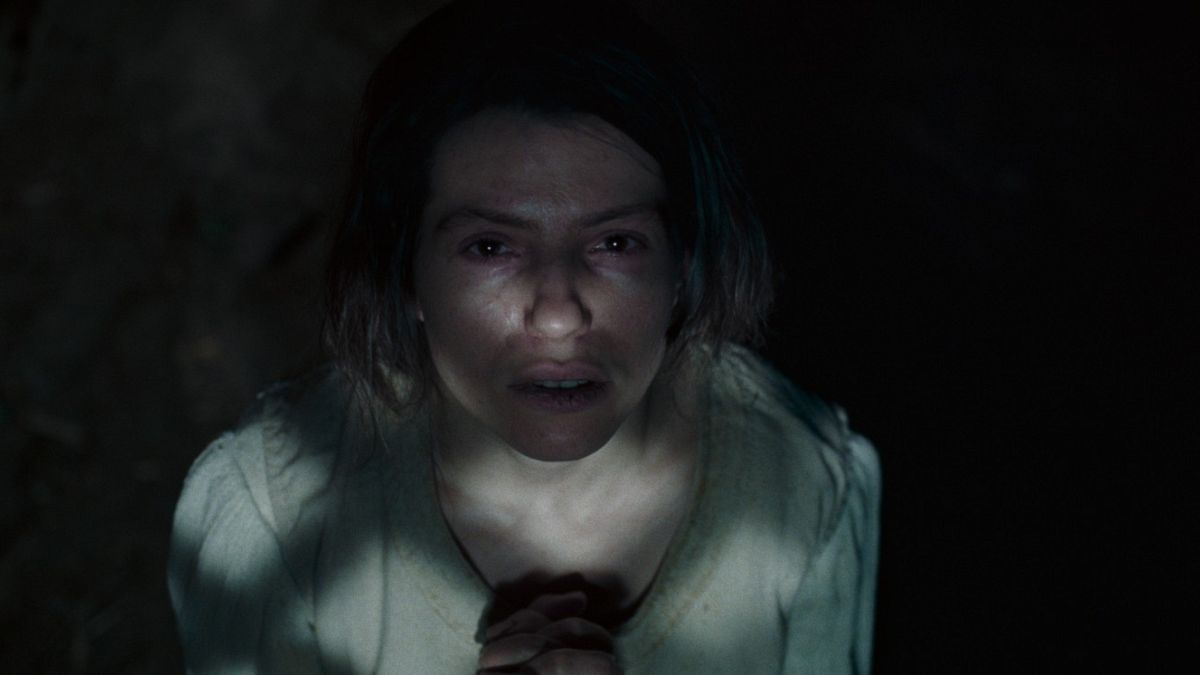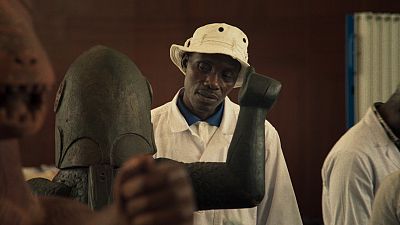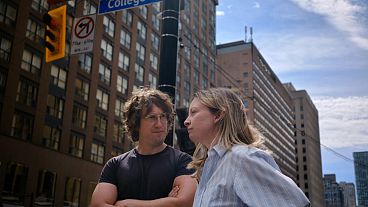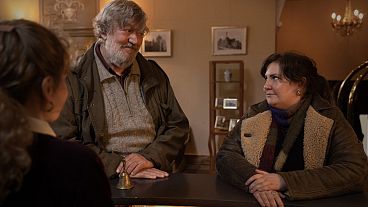A punishingly bleak but mesmerizing portrait of female depression in 18th century Austria and the sins of religious dogma that persist to this day.
Five minutes into Austrian directing duo Veronica Franz and Severin Fiala (Goodnight Mommy, The Lodge)’s third feature Des Teufels Bad (The Devil’s Bath), you know this period piece is not going to be an easy watch. And for good reason.
Upper Austria. 1750. A punishingly bleak prologue sees a mother traverse the woods, and head towards a waterfall. There, without batting an eyelid, she throws her screaming infant off the ledge. She then heads to the church, knocks on the door, and turns herself in to the authorities.
“I have committed a crime.”
She is executed. More precisely, she is decapitated, with her fingers and toes chopped off.
We then meet Agnes (Anja Plaschg) on her wedding day. She is given one of the woman’s fingers as a fertility charm after her marriage to Wolf (David Scheid), a man from another community. She prays for a child, but Wolf doesn’t seem interested in consuming their union, let alone touching her. He seems more admirative of his farmer friend Lenz, and his mother (Maria Hofstätter) looms large, controlling every aspect of Agnes’ life.
Gradually becoming more depressed and neglecting her wifely duties, she is taken to the local ‘barber’ to cure her of "the devil’s bath" – the 18th century term for melancholia. It becomes very apparent that nothing can cure her, as she has only one thing on her mind: escaping the emotionally cold life she no longer wishes to live. However, adhering to strict Christian dogma, the deeply pious Agnes knows she cannot kill herself and access the kingdom of heaven. Suicide is a cardinal sin, and she must find a dogmatic loophole, which will lead her to a radical act which could free her of her plight.
Based on extensive research into historical court records, The Devil’s Bath sees Franz and Fiala shine an unsettling light on a previously unexplored chapter of European history, which saw hundreds of people – mostly women – “curing” themselves of their depression by driving themselves to murder. Their sin allowed them to repent and seek absolution in confession before execution, something that eternal damnation by suicide prohibited. As for those who did not, a lifetime of loneliness, despair and servitude was the only alternative.
In crafting this profoundly immersive and disturbing psychological portrait, the directors employ some of the cinematic language of horror. Unlike Goodnight Mommy or The Lodge, however, The Devil’s Bath defies easy categorisation. It feels like a slow-burning religious drama whose pace mirrors the lead character’s melancholy, and which gives a voice to invisible women history has forgotten. Even if ecclesiastical doctrine remains alive and well to this day, adding some timely resonance to a film which echoes still-persistent stigma surrounding depression and suicide.
There are inescapable comparisons to Robert Eggers’ The Witch – mostly because of the meticulously crafted period accuracy, the way cinematographer Martin Gschlacht uses natural light to further convey gloomy authenticity, and the feminist strand that shows women reclaiming a sense of agency and grasping at emancipation when the times they lived in offered none. However, The Devil’s Bath shines on its own merits through its rich use of symbolism, the shocking use of violence, and some striking tableaus.
Whether it’s the totemic display of the prologue’s decapitated woman or the hung up animals carcasses, both of which recall the paintings of Francis Bacon, or even the duality of nature as both catalyst for hope (butterflies) and moody omen (fish heads that look like death masks), this film casts a visually entrancing spell unlike any other. Plaudits must go to production designers Andreas Donhauser and Renate Martin, who in no small way capture the harsh beauty of painterly landscapes and contribute to scenes which burrow under your skin and stay lodged there long after the credits have rolled.
Central to the film’s spellbinding pull is Plaschg, who is breathtaking throughout - especially in a third act scene that sees her plans come to tragic fruition. The build up to a striking confession scene towards the end is masterful, and the actress – who only has a handful of acting credits to her name – does something that few seasoned performers could manage: allow the interiority of her character to unleash itself in the space of a few seconds, breaking free from an invisible prison and laying bare a crippling anguish that is at once manically liberating and deeply horrific. It’s an exceptional performance, one amply deserving of the Berlinale’s main acting award.
On top of playing this demanding role and the layers of desperation she manages to bring to the screen, Plaschg – better known as the musical artist Soap&Skin – composed the ominous and mournful score.
Again, if she doesn’t run away with acting plaudits, hats will be eaten.
Rare are films like The Devil’s Bath which instil such an enveloping sense of time and place, while genre-mashing to perfection. It’s a spine-chilling critique of religious dogma; a moody and heart-wrenching excavation of the past’s voiceless; a riveting metaphysical exploration of the cages that have travelled through time to persist in current-day society.
Sounds like a lot?
It is. But that’s no excuse to let this bleak masterpiece pass you by.



